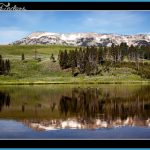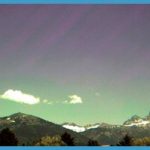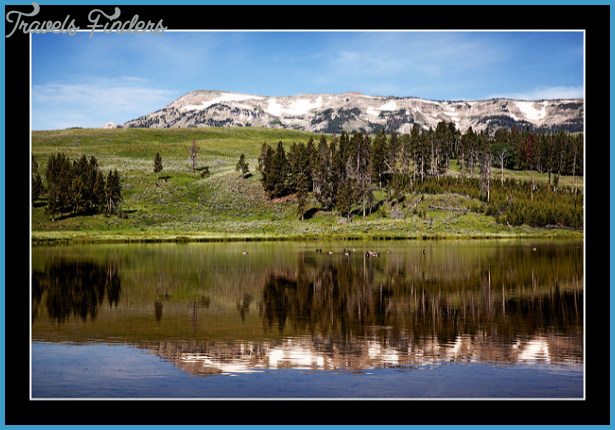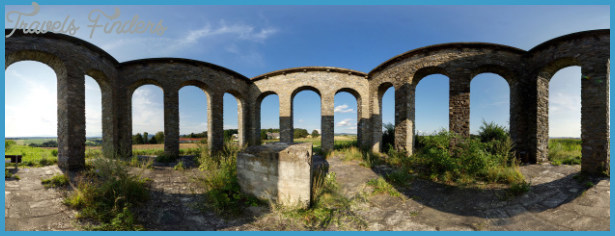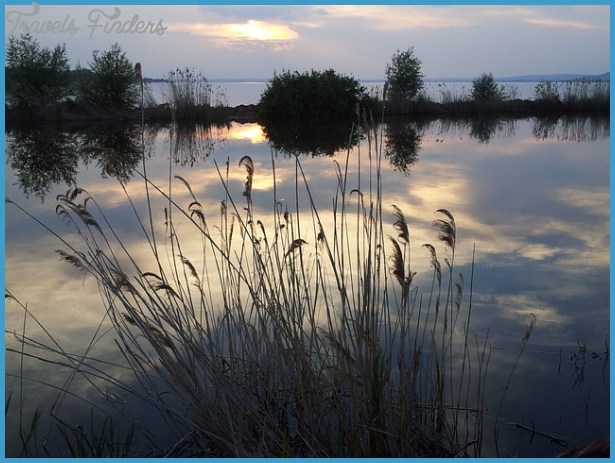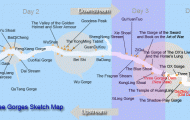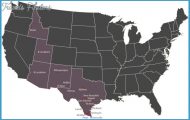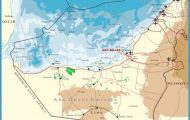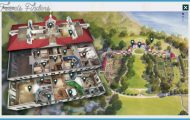Starting to the east (left) and looking around clockwise, you’ll see: To the east and southeast are mountains of the Washburn Range, 9 to 12 miles (15-19 km) away. To the south, the gently rolling terrain is part of the eroded Yellowstone caldera. Trilobite Point (10,011 ft/3051 m), a part of Mt. Holmes, the peak farthest to the left. It was named for ancient trilobite fossils found on the mountain. Mt. Holmes, the second highest one in this panorama (10,336 ft/3150 m), with a fire lookout on top and snow near its top most of the year. Dome Mountain with two peaks, the higher being 9903 ft (3018 m). Antler Peak (10,063 ft/3067 m), looking very pointed, as elk antlers are. Bannock Peak (10,332 ft/3149 m) barely peeking out at Quadrant’s left named for the tribe who trekked annually through this part of the park to hunt buffalo to the northeast.
By many visitors. You can get a glimpse of the falls from the road. The Glen Creek Trail goes west, starting across the main road from the parking area. It follows the former Snow Pass Road to join the long Fawn Pass and Sportsman Lake trails, which cross the northwest corner of the park, or to meet the Sepulcher Loop Trail up Sepulcher Mountain. For a delightful, easy 2-mile (3 km) hike, you can take the Glen Creek Trail for a few hundred yards (meters) until it joins the Howard Eaton Trail. Turn right for a gradual ascent to broad views of Swan Lake Flat and distant mountains to the south. Slightly farther on, you reach a fine panoramic view toward the Mammoth area to the north. Return from here or continue on the Howard Eaton Trail, following the path steeply down another 2 miles (3 km) to reach Mammoth through burned Douglas fir forest. According to ranger-interpreter Orville Bach, Jr.’s, hiking book, Exploring the Yellowstone Backcountry, on this trail you’ll find the greatest diversity of plant life of any short trail in the park. Bach also mentions the likelihood of black bears Quadrant Mountain (10,213 ft/3113 m), the flat-topped ridge in the middle of the view, named in 1878 by members of the Hayden Survey. Their topographer, Henry Gannett, wrote that the summit, with the northern and western slopes, forms a curved surface, roughly resembling a segment of a sphere.

